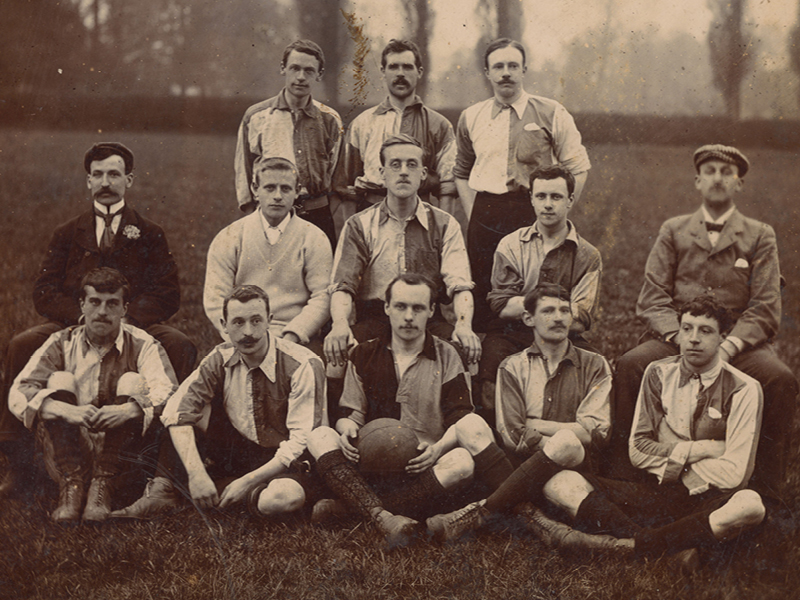EARLY PHOTOGRAPHY
The museum’s first temporary exhibition this year will be ‘What a Wonderful World’ a photographic exhibition by local amateur photographer, Peter Hagger. Today almost everyone in the UK has a camera as part of their mobile phone but when were cameras invented and what do the earliest photographs of St Neots show?
The camera obscura, the power of light passing through a tiny hole into a dark room to produce an image of an outside scene, had been known for at least two thousand years, but the ability to preserve the image was only discovered in the early 1800s. The invention of the Daguerrotype in 1839 made possible small photographic portraits on metal and these quickly became popular, although the process was slow and the subject had to remain totally still. By the early 1850s a new process which used a glass plate to create a negative had been invented and by December 1854 the photographic portrait had arrived in St Neots when Richard and Ann Spring of Peterborough advertised ‘portraits with frame for five shillings’. With the development of the glass plate negative enterprising traders, often chemists, who had the technical know-how, began to set up local photographic studios and some of the earliest known photographs of St Neots date from the 1850s and early 1860s. In 1863 Queen Victoria’s eldest son, the future Edward VII, married Princess Alexandra of Denmark and the entire country celebrated, with the day of their wedding, Tuesday 10th March 1863, being declared a national holiday. Local surveyor, architect and photographer, William Jackson photographed the street decorations and so gives us a glimpse of Victorian St Neots. His Cambridge Street photograph also shows a large cedar tree which must be one of the trees that gave the later school and the current doctor’s surgery its name.

1860’s
By the 1860s, the British government had recognised the usefulness of the camera to capture portraits and from the early 1870s every prisoner entering Huntingdon Goal was photographed, giving us some of the earliest images of local working people. In the late Victorian period George Eastman of New York developed photographic film and in 1901 he launched the Kodak Brownie camera which introduced photography to a mass market, although general camera ownership did not boom until wages rose in the 1950s. Colour photography also became possible from the early 1900s but again did not reach the general public until the 1950s. Research into digital images began in the 1950s and the first mobile phone with a camera arrived in 2002 when the Nokia 7650 was launched. Today photography has lost its novelty but photographs remain a precious way of recording our lives, yet another debt we owe to the remarkable Victorians!
<blockquote>A longer version of this article can be found on the museum website. <a href=”http://www.stneotsmuseum.org.uk/”>www.stneotsmuseum.org.uk</a></blockquote>


